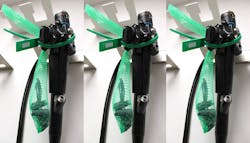Sterile Processing matters - there’s just no operating without it
The following refrain bears repeating …
frequently: Sterile Processing is the engine of a hospital and ambulatory/outpatient surgery center, among other healthcare facilities.
How is that possible? Simple. What happens to a cruise ship or even the Starship Enterprise without crew members manning the engine room? That cruise ship becomes stranded in the Gulf of Mexico or the U.S.S. Enterprise in the outskirts of the Alpha Quadrant in space.
Without the engineering crew enabling these vessels to operate, they go nowhere. Floating land barges in the water; stationary but rotating space station in the final frontier.
Now imagine a healthcare facility – inpatient or outpatient – without the sterile processing crew. Before the relatively recent advent of disposable endoscopic devices, for example, surgeons relied exclusively on reusable models that require extensive cleaning (including pre-treating at the point of use, the new phrasing for the former “pre-cleaning” concept), disinfection – high-level or otherwise – and sterilization. After each use on each patient.
Without the Sterile Processing engine crew, who brings these expensive surgical tools back for acceptable and proper use on patients? The surgeons? The nurses?
Will complete adoption of disposable or single-use endoscopic devices solve the problem and even reduce the need for Sterile Processing’s capable crew? Not really. You’ll read why a few pages from here.
So how does Sterile Processing & Distribution (SPD) navigate through the lingering pandemic while prepping for future crises and remain relevant?
For Jean Sargent, veteran Supply Chain and SPD leader-turned-consultant who has served on the editorial advisory board of Healthcare Purchasing News faithfully for nearly 25 years, it requires three central tenets:
1. Support from senior leadership: “Through the pandemic, many sterile processing departments came into view at a higher level than their direct management,” said Sargent, Principal, Sargent Healthcare Strategies. “It is time to take advantage of the newfound recognition by educating leadership, physicians and staff on the function of SPD, its importance, the guidelines that must be followed – walk a day in the shoes of an SPD tech.”
2. Appropriate pay: “Now that the senior leaders have seen the functioning of the department, the knowledge required, and the certification(s) required – pay the staff at an appropriate level. Kudos to those who have met that need,” she continued.
3. Recognition: “Recognize the department for their important contributions to patient care, patient safety and supporting the clinicians,” she urged. “Bring physicians into the department and allow them to visualize the time and care taken to process each and every item/tray.”
Sterile Processing matters. That’s why HPN extensively has covered the profession and function since the 1970s. In fact, this Endoscope Care section represents the 17th consecutive year it has shared insights and prose from the pros on proper procedures within HPN’s 44 years in print.
In fact, last year, HPN editorially dissected the multistep process of reprocessing endoscopic devices in one of the most extensive education and training handbooks on the matter worth keeping. You can revisit that story, “Endoscope Care in 2020 and beyond” here: https://www.hpnonline.com/sterile-processing/article/21157237/endoscope-care-in-2020-and-beyond. You also can find additional useful information at HPN Online (www.hpnonline.com). Just use the search term “Endoscope Care.”
Continue reading …
Pre-treatment at point-of-use ‘whodunit’
Pre-treating short cuts, task shifts can breed danger for patients
What does SPD need for endoscope reprocessing quality
All hail to the hybrids by the mid-2030s
Don’t let hang-time become a hang-up
Quality sterile processing a step-by-step process that starts in surgery
About the Author
Rick Dana Barlow
Senior Editor
Rick Dana Barlow is Senior Editor for Healthcare Purchasing News, an Endeavor Business Media publication. He can be reached at [email protected].

